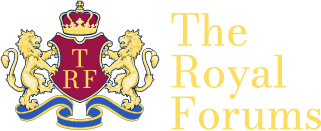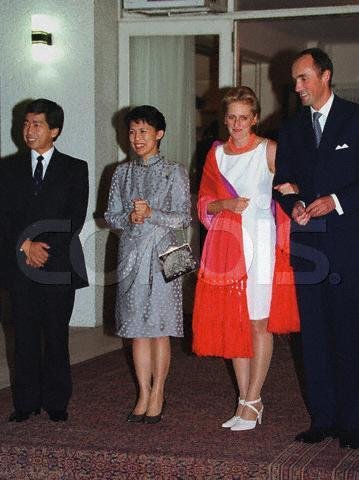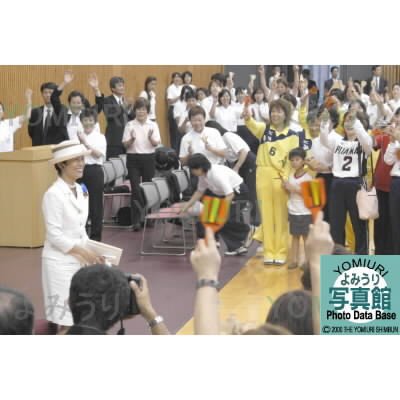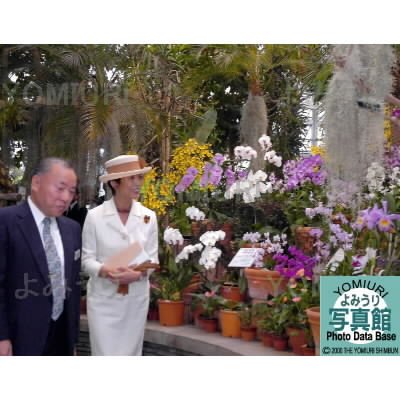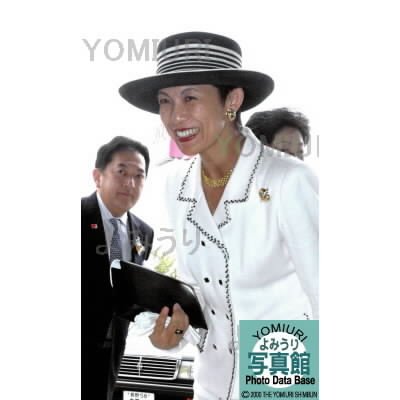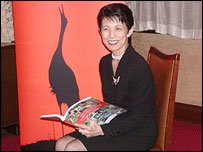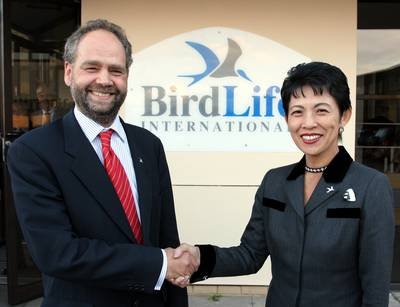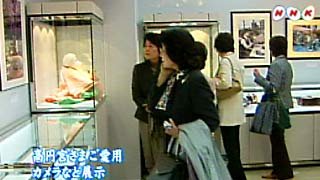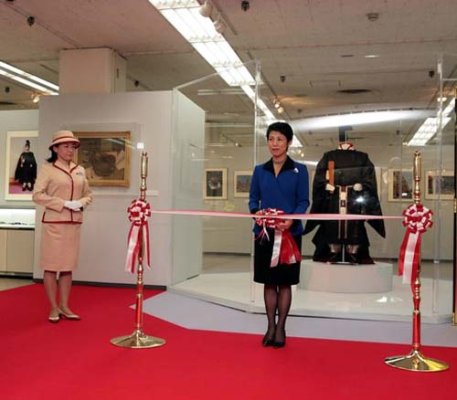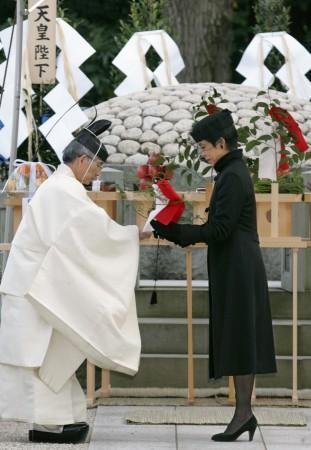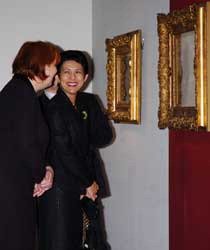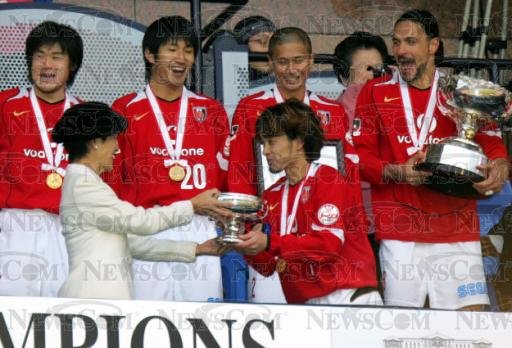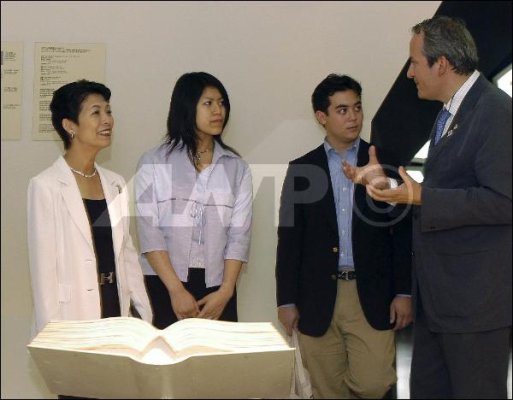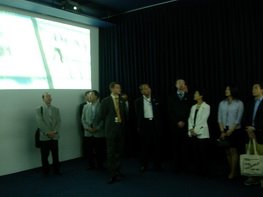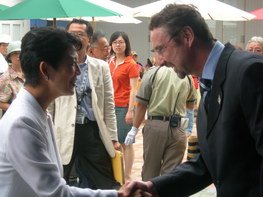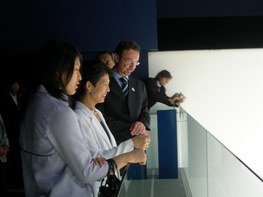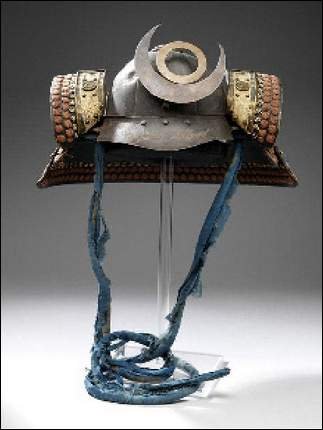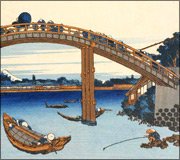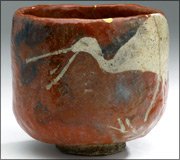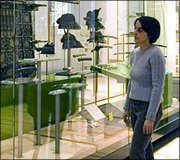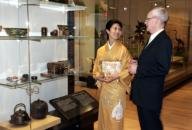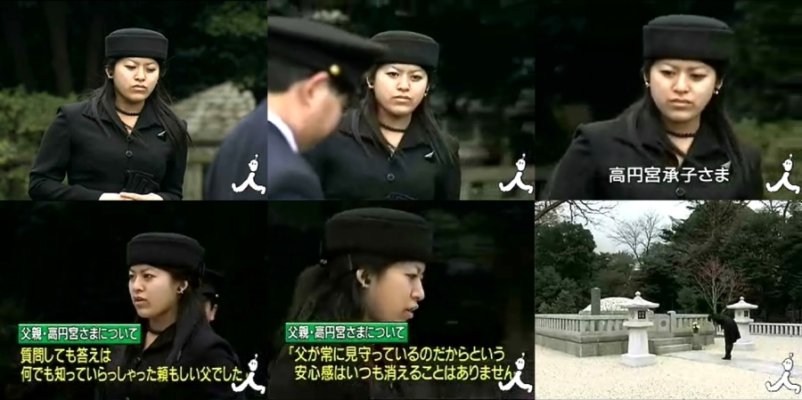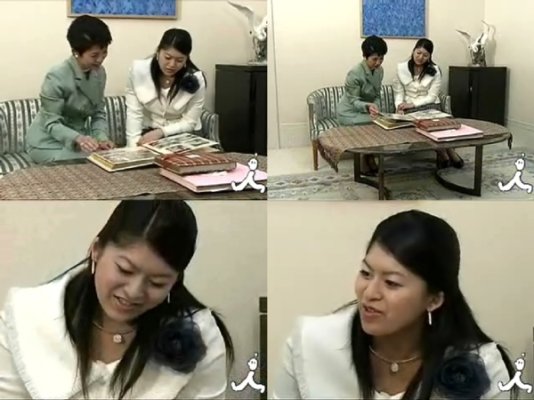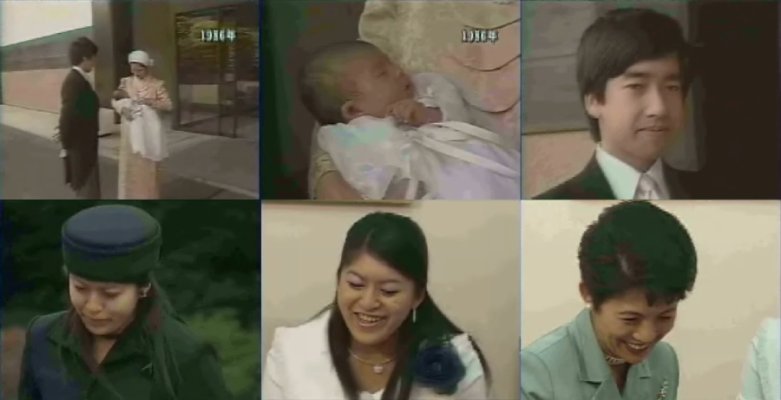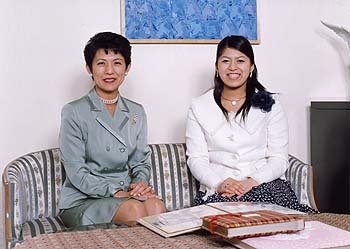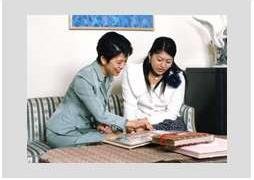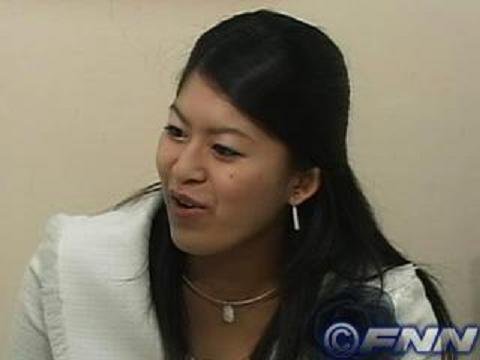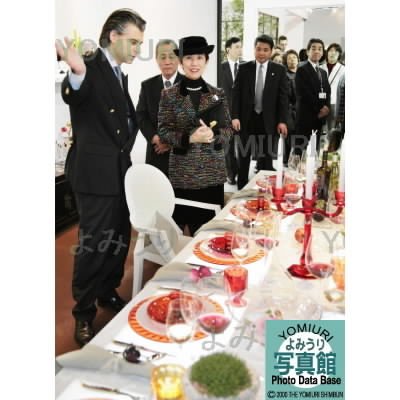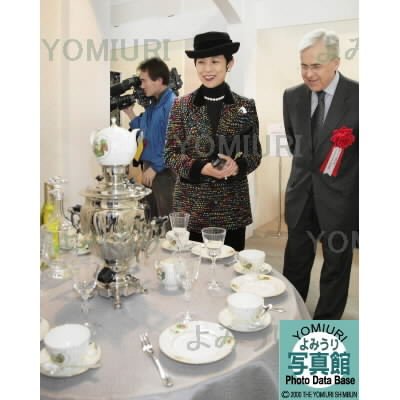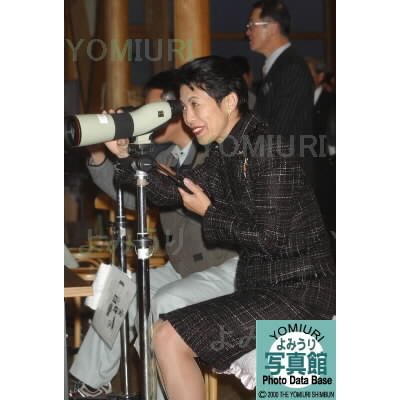You are using an out of date browser. It may not display this or other websites correctly.
You should upgrade or use an alternative browser.
You should upgrade or use an alternative browser.
Princess Hisako Takamado and Family: News and Pictures
- Thread starter jun5
- Start date
If you have answers, please help by responding to the unanswered posts.
Mandy
Majesty
- Joined
- Feb 20, 2003
- Messages
- 6,920
- Country
- United States
Princess Hisako Takamado: News and Pictures 1
Welcome to Part 1 of the Princess Hisako Takamado thread where you may post new news, pictures, comments and articles. Please remember to follow the Attachment and Copyright Rules. Happy posting!
Welcome to Part 1 of the Princess Hisako Takamado thread where you may post new news, pictures, comments and articles. Please remember to follow the Attachment and Copyright Rules. Happy posting!
mandyy
Heir Presumptive
- Joined
- Oct 4, 2004
- Messages
- 2,615
- Country
- Canada
Princess Hisako of Takamado will be visiting Great Britain next month from Nov 3rd to Nov. 8th to attend a meeting of the Bird Life International organization. Princess HIsako became the honarary president in March of 2004.
mandyy
Heir Presumptive
- Joined
- Oct 4, 2004
- Messages
- 2,615
- Country
- Canada
mandyy
Heir Presumptive
- Joined
- Oct 4, 2004
- Messages
- 2,615
- Country
- Canada
mandyy
Heir Presumptive
- Joined
- Oct 4, 2004
- Messages
- 2,615
- Country
- Canada
Princess in flying visit to bird charity's offices
http://www.cambridge-news.co.uk/news/city/2005/11/07/3eb220da-ddd4-45d7-8785-357726522a60.lpf
Japanese royal opens bird offices
http://news.bbc.co.uk/1/hi/england/cambridgeshire/4406508.stm
#1: BBC news
http://www.cambridge-news.co.uk/news/city/2005/11/07/3eb220da-ddd4-45d7-8785-357726522a60.lpf
Japanese royal opens bird offices
http://news.bbc.co.uk/1/hi/england/cambridgeshire/4406508.stm
#1: BBC news
Attachments
Last edited:
mandyy
Heir Presumptive
- Joined
- Oct 4, 2004
- Messages
- 2,615
- Country
- Canada
Scotland awaits another royal
http://www.studentnewspaper.org/view_article.php?article_id=20040421105722
BirdLife receives Royal visit
http://www.birdlife.org/news/news/2005/11/princess_takamado.html
BirdLife's new Global Office in Cambridge, UK, has been officially opened today by Her Imperial Highness Princess Hisako Takamado of Japan, BirdLife's Honorary President. The Princess also took time to meet the organisation's staff members.....
#1: BirdLife International (Nov. 4, 2005)-Dr Mike Rands and Her Imperial Highness Princess Takamado at the official opening of BirdLife's new offices
http://www.studentnewspaper.org/view_article.php?article_id=20040421105722
BirdLife receives Royal visit
http://www.birdlife.org/news/news/2005/11/princess_takamado.html
BirdLife's new Global Office in Cambridge, UK, has been officially opened today by Her Imperial Highness Princess Hisako Takamado of Japan, BirdLife's Honorary President. The Princess also took time to meet the organisation's staff members.....
#1: BirdLife International (Nov. 4, 2005)-Dr Mike Rands and Her Imperial Highness Princess Takamado at the official opening of BirdLife's new offices
Attachments
Last edited by a moderator:
mandyy
Heir Presumptive
- Joined
- Oct 4, 2004
- Messages
- 2,615
- Country
- Canada
Princess Hisako Takamado is not only beautiful but she is also stylish in her own way. I think she isn't afraid to experiment with her looks. She is also very cheerful. I am hoping to see more pictures of her in both official and non-official events in the future!
mandyy
Heir Presumptive
- Joined
- Oct 4, 2004
- Messages
- 2,615
- Country
- Canada
mandyy
Heir Presumptive
- Joined
- Oct 4, 2004
- Messages
- 2,615
- Country
- Canada
mandyy
Heir Presumptive
- Joined
- Oct 4, 2004
- Messages
- 2,615
- Country
- Canada
Mainichi news says that Princess Hisako of Takamado will be visiting Canada from Jan. 22nd to the 28th to open Prince Takamado's gallery in a museum in Ontario.
Below is the press Release from June 2004
ROM's new Gallery of Japan to be named for the late Prince Takamado
Major gallery to showcase hidden treasure trove of Japanese art
On Saturday, June 12, 2004, the Toronto Japanese Association of Commerce & Industry, The Japan Society, and the ROM Foundation hosted a formal reception and dinner in honour of Her Imperial Highness Princess Takamado of Japan, who is currently on an official visit to Canada. Speaking to a packed Currelly Gallery, William Thorsell, Director and CEO of the ROM, announced that the ROM's new Japanese gallery, due to open in 2005, will be named the Prince Takamado Gallery of Japan in honour of Her Imperial Highness' late husband. Mr. Thorsell also announced that Princess Takamado has graciously accepted the appointment of Honorary Patron to the Renaissance ROM Campaign Cabinet and the Japan Initiative of Renaissance ROM.
Princess Takamado's visit to the ROM in 2004 is part of a national tour to commemorate the 75th anniversary of the establishment of diplomatic relations between Canada and Japan, and to celebrate the thriving friendship that has developed between the two countries.
Perhaps no one exemplified the vitality of this friendship more than the late Prince Takamado. Often fondly referred to as the "Canadian Prince" in his native Japan, Prince Takamado first came to Canada in 1978 to study at Queen's University in Kingston and quickly became an aficionado of all things Canadian. An accomplished photographer and author, Prince Takamado was also an avid collector of Japanese and Inuit Art, and devoted a section of his photo essay book, A Moment of My True Self, to the beauty of the Canadian arctic. "For me Canada is like my second country," wrote the Prince. "It is a country with which I have a profound relationship."
Through his work at the Japan Foundation, Prince Takamado traveled extensively, becoming one of the most visible and active ambassadors for Japanese art and culture around the world. In the Japan-Canada context, Prince Takamado believed that while business and trade exchanges were essential to mutual prosperity, cultural exchange was a far richer way to strengthen friendship and understanding between both countries.
No stranger to Canada herself, Princess Takamado has visited every major region of the country and, like her husband, professes a great affection for the land and its people. A gifted children's author, her Lulie The Iceberg was inspired by a 1995 tour of Baffin Island and Greenland, and illustrated by the Japanese-Canadian artist Warabé Aska. Recently the book was adapted for the stage by Canadian playwright Raymond Storey.
"We are so honoured to have the company and imprimatur of Her Imperial Highness," William Thorsell stated. "The Japanese collection has always been among the Museum's finest, and through Renaissance ROM, we are finally giving Canada's largest collection of Japanese art the presence it so strongly merits. Facing on to the pastoral beauty of Philosophers' Walk, the Prince Takamado Gallery of Japan will be a major highlight of our revitalized Museum, a place of repose and serene contemplation."
Consul General Takashi Koezuka, Honorary Advisor to the Renaissance ROM Campaign, added, "The Japanese Government is very proud to support Renaissance ROM, and in particular the Japan Initiative, which is the largest initiative related to Japanese culture in Canada today. As we celebrate seventy-five years of diplomatic relations, I can think of no project that captures the spirit of friendship and mutual respect between our countries better than Renaissance ROM's Japan Initiative."
A cornerstone of Renaissance ROM, the $3.75 million Japan Initiative will establish the Prince Takamado Gallery of Japan in the north wing of the beautifully restored 1912 Philosophers' Walk building. In addition to the gallery, the Japan Initiative will create an endowed Curatorship of Japanese Art, a Japan Endowment Fund for educational and public programs, and the digitization of the Japanese collection under ROM Digital. The Japan Initiative has already raised $2 million from many generous donors, including Canon Canada Inc., Honda Canada Inc., Maple Leaf Foods, Mitsui & Co. (Canada) Ltd., Sony of Canada Ltd., and Toyota Canada Inc. who are each contributing $250,000 to the project.
Among the honoured guests at the dinner and reception for Princess Takamado, which included many leaders from the Japanese business community, was Mr. Kiyotaka Watanabe, President and CEO of Mitsui and Company (Canada) Ltd., President of the Toronto Japanese Association of Commerce and Industry (Shokokai), and Chair of the Japan Cabinet of the Renaissance ROM Campaign. Together with Mr. Koezuka, Watanabe has played a crucial role in shaping the Japan Initiative and rallying the Japanese business community around the idea of establishing the ROM as an important centre for Japanese art and culture in Canada.
"The Prince Takamado Gallery of Japan will be a fitting tribute to the important cultural work Prince Takamado did around the world and the great warmth he felt for Canada," said Mr. Watanabe. "His vision of bringing people closer together through cultural exchange is really what the ROM is all about. The Japanese business community has embraced Renaissance ROM because we recognize the tremendous role this museum will play in sharing Japan with all Canadians."
Princess Takamado will travel on to Kingston from Toronto, and conclude her official trip to Canada in Prince Edward Island on June 21. Festivities and cultural events marking seventy-five years of diplomatic relations between Canada and Japan will continue throughout the year.
http://www.rom.on.ca/news/releases/public.php?mediakey=x0nfk8saz2
Below is the press Release from June 2004
ROM's new Gallery of Japan to be named for the late Prince Takamado
Major gallery to showcase hidden treasure trove of Japanese art
On Saturday, June 12, 2004, the Toronto Japanese Association of Commerce & Industry, The Japan Society, and the ROM Foundation hosted a formal reception and dinner in honour of Her Imperial Highness Princess Takamado of Japan, who is currently on an official visit to Canada. Speaking to a packed Currelly Gallery, William Thorsell, Director and CEO of the ROM, announced that the ROM's new Japanese gallery, due to open in 2005, will be named the Prince Takamado Gallery of Japan in honour of Her Imperial Highness' late husband. Mr. Thorsell also announced that Princess Takamado has graciously accepted the appointment of Honorary Patron to the Renaissance ROM Campaign Cabinet and the Japan Initiative of Renaissance ROM.
Princess Takamado's visit to the ROM in 2004 is part of a national tour to commemorate the 75th anniversary of the establishment of diplomatic relations between Canada and Japan, and to celebrate the thriving friendship that has developed between the two countries.
Perhaps no one exemplified the vitality of this friendship more than the late Prince Takamado. Often fondly referred to as the "Canadian Prince" in his native Japan, Prince Takamado first came to Canada in 1978 to study at Queen's University in Kingston and quickly became an aficionado of all things Canadian. An accomplished photographer and author, Prince Takamado was also an avid collector of Japanese and Inuit Art, and devoted a section of his photo essay book, A Moment of My True Self, to the beauty of the Canadian arctic. "For me Canada is like my second country," wrote the Prince. "It is a country with which I have a profound relationship."
Through his work at the Japan Foundation, Prince Takamado traveled extensively, becoming one of the most visible and active ambassadors for Japanese art and culture around the world. In the Japan-Canada context, Prince Takamado believed that while business and trade exchanges were essential to mutual prosperity, cultural exchange was a far richer way to strengthen friendship and understanding between both countries.
No stranger to Canada herself, Princess Takamado has visited every major region of the country and, like her husband, professes a great affection for the land and its people. A gifted children's author, her Lulie The Iceberg was inspired by a 1995 tour of Baffin Island and Greenland, and illustrated by the Japanese-Canadian artist Warabé Aska. Recently the book was adapted for the stage by Canadian playwright Raymond Storey.
"We are so honoured to have the company and imprimatur of Her Imperial Highness," William Thorsell stated. "The Japanese collection has always been among the Museum's finest, and through Renaissance ROM, we are finally giving Canada's largest collection of Japanese art the presence it so strongly merits. Facing on to the pastoral beauty of Philosophers' Walk, the Prince Takamado Gallery of Japan will be a major highlight of our revitalized Museum, a place of repose and serene contemplation."
Consul General Takashi Koezuka, Honorary Advisor to the Renaissance ROM Campaign, added, "The Japanese Government is very proud to support Renaissance ROM, and in particular the Japan Initiative, which is the largest initiative related to Japanese culture in Canada today. As we celebrate seventy-five years of diplomatic relations, I can think of no project that captures the spirit of friendship and mutual respect between our countries better than Renaissance ROM's Japan Initiative."
A cornerstone of Renaissance ROM, the $3.75 million Japan Initiative will establish the Prince Takamado Gallery of Japan in the north wing of the beautifully restored 1912 Philosophers' Walk building. In addition to the gallery, the Japan Initiative will create an endowed Curatorship of Japanese Art, a Japan Endowment Fund for educational and public programs, and the digitization of the Japanese collection under ROM Digital. The Japan Initiative has already raised $2 million from many generous donors, including Canon Canada Inc., Honda Canada Inc., Maple Leaf Foods, Mitsui & Co. (Canada) Ltd., Sony of Canada Ltd., and Toyota Canada Inc. who are each contributing $250,000 to the project.
Among the honoured guests at the dinner and reception for Princess Takamado, which included many leaders from the Japanese business community, was Mr. Kiyotaka Watanabe, President and CEO of Mitsui and Company (Canada) Ltd., President of the Toronto Japanese Association of Commerce and Industry (Shokokai), and Chair of the Japan Cabinet of the Renaissance ROM Campaign. Together with Mr. Koezuka, Watanabe has played a crucial role in shaping the Japan Initiative and rallying the Japanese business community around the idea of establishing the ROM as an important centre for Japanese art and culture in Canada.
"The Prince Takamado Gallery of Japan will be a fitting tribute to the important cultural work Prince Takamado did around the world and the great warmth he felt for Canada," said Mr. Watanabe. "His vision of bringing people closer together through cultural exchange is really what the ROM is all about. The Japanese business community has embraced Renaissance ROM because we recognize the tremendous role this museum will play in sharing Japan with all Canadians."
Princess Takamado will travel on to Kingston from Toronto, and conclude her official trip to Canada in Prince Edward Island on June 21. Festivities and cultural events marking seventy-five years of diplomatic relations between Canada and Japan will continue throughout the year.
http://www.rom.on.ca/news/releases/public.php?mediakey=x0nfk8saz2
Last edited:
fanletizia
Heir Apparent
- Joined
- Jun 19, 2005
- Messages
- 4,265
- City
- Madrid
- Country
- Spain
mandyy
Heir Presumptive
- Joined
- Oct 4, 2004
- Messages
- 2,615
- Country
- Canada
#1-2: Japanese Princess Takamado and her daughter Tsuguko listen to Spanish Pavillion's director, Mauricio Garcia Franco during their visit to Spanish Pavillion at Aichi Expo on Sunday 24 July 2005 in Aichi, Japan.
Photos from ANP
#3-5: Visit at the Croatia Pavillion (Photos from the official Croatia Expo website)
Photos from ANP
#3-5: Visit at the Croatia Pavillion (Photos from the official Croatia Expo website)
Attachments
Last edited:
mandyy
Heir Presumptive
- Joined
- Oct 4, 2004
- Messages
- 2,615
- Country
- Canada
NATURE FOR LIFE
By Anabelle E. Plantilla
...............I have met some famous people who are avid birders. One of them is Princess Takamado of Japan who is now honorary president of BirdLife. One amazing fact about the princess is that her favorite bird is the Haring Ibon (Philippine eagle) and for the past two years, she has been keen on visiting our country just to see this magnificent bird in the wild. Last October, I again extended Haribon’s invitation for her to visit the Philippines and she optimistically said that it will happen. Like her, I haven’t seen this bird in the wild................
http://www.manilatimes.net/national/2006/jan/21/yehey/opinion/20060121opi5.html
By Anabelle E. Plantilla
...............I have met some famous people who are avid birders. One of them is Princess Takamado of Japan who is now honorary president of BirdLife. One amazing fact about the princess is that her favorite bird is the Haring Ibon (Philippine eagle) and for the past two years, she has been keen on visiting our country just to see this magnificent bird in the wild. Last October, I again extended Haribon’s invitation for her to visit the Philippines and she optimistically said that it will happen. Like her, I haven’t seen this bird in the wild................
http://www.manilatimes.net/national/2006/jan/21/yehey/opinion/20060121opi5.html
mandyy
Heir Presumptive
- Joined
- Oct 4, 2004
- Messages
- 2,615
- Country
- Canada
Royal Ontario Museum opens 10 new galleries
Massive expansion in Toronto offers a dazzling display of relics from Asia, Canada and Cyprus
(January 15, 2006) — TORONTO — With a flourish of samurai swords and Native Canadian artifacts, the Royal Ontario Museum has launched one of the world's largest gallery expansions.
Ten new exhibit spaces feature a spectacular array of art and relics from Asian, early Canadian and Cypriot cultures. By 2008, the 1914 landmark will house 26 new or renovated galleries, built with $233 million (Canadian) in government and private funds. To absorb this growth, the grand old dowager of Queen's Park will need more than a few nips and tucks. Much of her body will be redesigned courtesy of lead architect Daniel Libeskind, whose studio also is re-creating the World Trade Center site...................
.............The Prince Takamado Gallery of Japan should be a magnet for families with small children. Youngsters will head for its funky arsenal of antique armor. One black helmet seems ripped from Darth Vader's head, while another sprouts a fierce mustache, beetle brows and horns to intimidate enemies. Samurai swords complete the wardrobe......................
http://www.democratandchronicle.com/apps/pbcs.dll/article?AID=/20060115/ENT0102/601150301/1052/ENT
Photo from Royal Ontario Museum: A helmet from the Edo period (1603-1867) is part of the Prince Takamado Gallery of Japan.
Massive expansion in Toronto offers a dazzling display of relics from Asia, Canada and Cyprus
(January 15, 2006) — TORONTO — With a flourish of samurai swords and Native Canadian artifacts, the Royal Ontario Museum has launched one of the world's largest gallery expansions.
Ten new exhibit spaces feature a spectacular array of art and relics from Asian, early Canadian and Cypriot cultures. By 2008, the 1914 landmark will house 26 new or renovated galleries, built with $233 million (Canadian) in government and private funds. To absorb this growth, the grand old dowager of Queen's Park will need more than a few nips and tucks. Much of her body will be redesigned courtesy of lead architect Daniel Libeskind, whose studio also is re-creating the World Trade Center site...................
.............The Prince Takamado Gallery of Japan should be a magnet for families with small children. Youngsters will head for its funky arsenal of antique armor. One black helmet seems ripped from Darth Vader's head, while another sprouts a fierce mustache, beetle brows and horns to intimidate enemies. Samurai swords complete the wardrobe......................
http://www.democratandchronicle.com/apps/pbcs.dll/article?AID=/20060115/ENT0102/601150301/1052/ENT
Photo from Royal Ontario Museum: A helmet from the Edo period (1603-1867) is part of the Prince Takamado Gallery of Japan.
Attachments
mandyy
Heir Presumptive
- Joined
- Oct 4, 2004
- Messages
- 2,615
- Country
- Canada
Prince Takamado Gallery of Japan
The gallery draws from the ROM's outstanding collection of Japanese ceramics, religious sculpture, tea ceremony objects, prints, paintings, lacquers and armour. The Museum holds the largest collection of Japanese art in Canada.
Level 1, Philosophers’ Walk Wing
Located near the main entrance of the Museum’s 1914 building, this attractive space now displays many of the ROM’s Japanese objects, including porcelain, religious sculpture, tea ceremony objects, prints, paintings, lacquer and armour. The ROM holds the largest collection of Japanese art in Canada.
Four sections are devoted to Japanese pictorial arts, featuring Ukiyo-e prints, scroll paintings, albums and multi-paneled folding screens. A stunning selection of prints by 18th- and 19th-century masters such as Harunobu, Utamaro, Hokusai and Hiroshige are on display in the Toyota Canada Inc. Exhibit of Ukiyo-e Pictures. Hanging scrolls and hand scrolls are on display in the Sony Exhibit of Painting.
The Canon Canada Inc Samurai Exhibit offers a glimpse of the unique culture of the samurai warrior through a display of Japanese armour, swords, sword ornaments, horse armour, trappings and helmets.
A gallery highlight is a collection of tea objects on display in the Mitsui & Co. Canada Tea Ceremony Exhibit. Many are drawn from the Yamagami collection, the most complete tea master’s set in any North American museum. A series of beautifully decorated writing boxes, picnic kits and smoking sets are on display in the Maple Leaf Foods Exhibit of Lacquers.
The Linamar Corporation Exhibit of Ceramics features popular Japanese porcelain (Hizen ware), finely detailed and vividly coloured Kyoto and Satsuma earthenwares, and a selection of modern ceramics, dating from the 15th century to the present.
Wood, lacquer and clay sculptures, dating to as early as the 7th century, are on display in an exhibit generously supported by an anonymous caring company.
The gallery is named in memory of Prince Takamado (1954 - 2002), who was known in his native Japan as "Canada’s Prince". The gallery celebrates his attachment to Canada and creates a lasting link beween the two countries.
http://www.rom.on.ca/exhibitions/wculture/wcjapan.php
photos from Royal Ontario Museum Website
#1: View of Prince Takamado Gallery of Japan.
#2: Tea bowl, earthware, orangish-red slip.
#3: Under the Mannen Bridge at Fukagawa, Katsushika Hokusai.
The gallery draws from the ROM's outstanding collection of Japanese ceramics, religious sculpture, tea ceremony objects, prints, paintings, lacquers and armour. The Museum holds the largest collection of Japanese art in Canada.
Level 1, Philosophers’ Walk Wing
Located near the main entrance of the Museum’s 1914 building, this attractive space now displays many of the ROM’s Japanese objects, including porcelain, religious sculpture, tea ceremony objects, prints, paintings, lacquer and armour. The ROM holds the largest collection of Japanese art in Canada.
Four sections are devoted to Japanese pictorial arts, featuring Ukiyo-e prints, scroll paintings, albums and multi-paneled folding screens. A stunning selection of prints by 18th- and 19th-century masters such as Harunobu, Utamaro, Hokusai and Hiroshige are on display in the Toyota Canada Inc. Exhibit of Ukiyo-e Pictures. Hanging scrolls and hand scrolls are on display in the Sony Exhibit of Painting.
The Canon Canada Inc Samurai Exhibit offers a glimpse of the unique culture of the samurai warrior through a display of Japanese armour, swords, sword ornaments, horse armour, trappings and helmets.
A gallery highlight is a collection of tea objects on display in the Mitsui & Co. Canada Tea Ceremony Exhibit. Many are drawn from the Yamagami collection, the most complete tea master’s set in any North American museum. A series of beautifully decorated writing boxes, picnic kits and smoking sets are on display in the Maple Leaf Foods Exhibit of Lacquers.
The Linamar Corporation Exhibit of Ceramics features popular Japanese porcelain (Hizen ware), finely detailed and vividly coloured Kyoto and Satsuma earthenwares, and a selection of modern ceramics, dating from the 15th century to the present.
Wood, lacquer and clay sculptures, dating to as early as the 7th century, are on display in an exhibit generously supported by an anonymous caring company.
The gallery is named in memory of Prince Takamado (1954 - 2002), who was known in his native Japan as "Canada’s Prince". The gallery celebrates his attachment to Canada and creates a lasting link beween the two countries.
http://www.rom.on.ca/exhibitions/wculture/wcjapan.php
photos from Royal Ontario Museum Website
#1: View of Prince Takamado Gallery of Japan.
#2: Tea bowl, earthware, orangish-red slip.
#3: Under the Mannen Bridge at Fukagawa, Katsushika Hokusai.
Attachments
mandyy
Heir Presumptive
- Joined
- Oct 4, 2004
- Messages
- 2,615
- Country
- Canada
Official Opening of the Prince Takamado Gallery of Japan
Thursday, January 26, 2006
Status: TICKETS ARE SOLD OUT
The Prince Takamado Gallery of Japan unveils the ROM's extensive collection of Japanese art, including items never before displayed in Canada.
Among the highlights in the gallery are a selection of 18th - 19th century Ukiyo-e prints, the Yamagami tea ceremony collection (the only complete tea master's collection in a North American museum), and stunning ceramics, woodblock prints, lacquers, samurai armour, paintings and sculptures.
Named in honor of Prince Takamado (1954 - 2002), who studied at Queen's University and was an avid collector of Inuit Art, the Gallery of Japan celebrates his attachment to Canada and creates a lasting link between the two countries.
The Prince Takamado Gallery of Japan would not be possible without the generosity of the many donors to the Japan Initative at the ROM.
Samuel Hall Currelly Gallery
7:00 pm reception
8:00 pm dinner
with an original musical tribute to Prince Takamado by Ron Korb
Attire: business or traditional dress
Cost: Ticket: $150, Patron Table: $3,000
http://www.rom.on.ca/programs/lectures/index.php?ref=showinfo&program_id=107
Ceremonial Opening Events for Prince Takamado Gallery of Japan
January 26: Official Opening with H.I.H. Princess Takamado
January 27: Japan Night at the ROM
Toronto’s Royal Ontario Museum (ROM) will hold two ceremonial events to mark the opening of its new Prince Takamado Gallery of Japan, recently completed in the first stage of the Renaissance ROM project.
The announcement of the Official Opening of the new gallery will be made on Thursday, January 26th during a gala dinner, preceded by a private tea ceremony and VIP reception. Her Imperial Highness, Princess Takamado of Japan, will attend this event, as well as a number of special guests, donors and volunteers involved with the Japan initiative at the ROM. The gala dinner in honour of the Princess is co-hosted with the ROM’s Bishop White Committee, a group of Museum volunteers dedicated to the arts of East Asia. So****su SEN XVI, Grand Master Urasenke Chado Tradition of tea ceremony, Ikebana Masters Professor Seiha Sugihara and Professor Yasuhito Sasaki, and musician Ron Korb will also participate in this special evening. Tickets to this event are entirely sold out.
Members of the media are invited to participate in a PHOTO OPPORTUNITY from 6:45 to 7:00 pm on January 26th, as Her Imperial Highness tours the Gallery with the Japanese Ambassador to Canada and his wife (Mr. Sadaaki Numata and Mrs. Kyoko Numata), the Consul General of Japan in Toronto and his wife (Mr. Hisao Yamaguchi and Mrs. Chieko Yamaguchi) and ROM officials. We regret that we cannot allow media into the other events of the evening.
All media must arrive at the ROM’s Staff Entrance (at the south end of the building) between 6:20 and 6:40 pm. That evening, contact Francisco Alvarez at (416) 995 8737...................
http://www.rom.on.ca/news/releases/public.php?mediakey=qic9k2qxo3
Princess Hisako Takamado is probably going to be there for the opening ceremony.
Thursday, January 26, 2006
Status: TICKETS ARE SOLD OUT
The Prince Takamado Gallery of Japan unveils the ROM's extensive collection of Japanese art, including items never before displayed in Canada.
Among the highlights in the gallery are a selection of 18th - 19th century Ukiyo-e prints, the Yamagami tea ceremony collection (the only complete tea master's collection in a North American museum), and stunning ceramics, woodblock prints, lacquers, samurai armour, paintings and sculptures.
Named in honor of Prince Takamado (1954 - 2002), who studied at Queen's University and was an avid collector of Inuit Art, the Gallery of Japan celebrates his attachment to Canada and creates a lasting link between the two countries.
The Prince Takamado Gallery of Japan would not be possible without the generosity of the many donors to the Japan Initative at the ROM.
Samuel Hall Currelly Gallery
7:00 pm reception
8:00 pm dinner
with an original musical tribute to Prince Takamado by Ron Korb
Attire: business or traditional dress
Cost: Ticket: $150, Patron Table: $3,000
http://www.rom.on.ca/programs/lectures/index.php?ref=showinfo&program_id=107
Ceremonial Opening Events for Prince Takamado Gallery of Japan
January 26: Official Opening with H.I.H. Princess Takamado
January 27: Japan Night at the ROM
Toronto’s Royal Ontario Museum (ROM) will hold two ceremonial events to mark the opening of its new Prince Takamado Gallery of Japan, recently completed in the first stage of the Renaissance ROM project.
The announcement of the Official Opening of the new gallery will be made on Thursday, January 26th during a gala dinner, preceded by a private tea ceremony and VIP reception. Her Imperial Highness, Princess Takamado of Japan, will attend this event, as well as a number of special guests, donors and volunteers involved with the Japan initiative at the ROM. The gala dinner in honour of the Princess is co-hosted with the ROM’s Bishop White Committee, a group of Museum volunteers dedicated to the arts of East Asia. So****su SEN XVI, Grand Master Urasenke Chado Tradition of tea ceremony, Ikebana Masters Professor Seiha Sugihara and Professor Yasuhito Sasaki, and musician Ron Korb will also participate in this special evening. Tickets to this event are entirely sold out.
Members of the media are invited to participate in a PHOTO OPPORTUNITY from 6:45 to 7:00 pm on January 26th, as Her Imperial Highness tours the Gallery with the Japanese Ambassador to Canada and his wife (Mr. Sadaaki Numata and Mrs. Kyoko Numata), the Consul General of Japan in Toronto and his wife (Mr. Hisao Yamaguchi and Mrs. Chieko Yamaguchi) and ROM officials. We regret that we cannot allow media into the other events of the evening.
All media must arrive at the ROM’s Staff Entrance (at the south end of the building) between 6:20 and 6:40 pm. That evening, contact Francisco Alvarez at (416) 995 8737...................
http://www.rom.on.ca/news/releases/public.php?mediakey=qic9k2qxo3
Princess Hisako Takamado is probably going to be there for the opening ceremony.
Last edited:
mandyy
Heir Presumptive
- Joined
- Oct 4, 2004
- Messages
- 2,615
- Country
- Canada
Media Releases from Royal Ontario Museum
Prince Takamado Gallery of Japan
New permanent gallery presenting Japanese art opens December 26, 2005
A new gallery devoted to Japanese art opens on Monday, December 26, 2005, signaling the completion of the first stage of galleries comprising Renaissance ROM, the Royal Ontario Museum’s (ROM) expansion and restoration project. The Prince Takamado Gallery of Japan features many of the ROM’s outstanding collection of Japanese objects, including ceramics, porcelain, tea ceremony utensils, sculpture, prints and paintings, lacquers, and armour. This new gallery is located on the main floor of the ROM’s 1914 Philosophers’ Walk building,
Located near the original main entrance of the Museum’s 1914 building, the 3,000-square foot (270 sq. metres) gallery includes over 600 objects drawn from the ROM’s collection of Japanese art, the largest such collection in Canada. The Prince Takamado Gallery of Japan is part of a suite of Far Eastern galleries that occupy the entire main floor of the Philosophers’ Walk building. Windows have been uncovered and high ceilings reclaimed, creating an open and bright new space for visitors to explore the art and archeology of Japan, China, and Korea.
“Japanese art embraces seemingly contradictory qualities: subtlety and boldness, balance and asymmetry. It is different, yet feels familiar,” said Klaas Ruitenbeek, Louise Hawley Stone Chair of Far Eastern Art and coordinating curator of the gallery. “The ROM’s fine collection of Japanese art has been locked away in storage for twenty-five years. It is no less than a revelation to see it now in this beautifully designed new gallery.”
Gallery’s main exhibits:
The Canon Canada Inc Samurai Exhibit near the gallery’s entrance highlights the artistic tastes and superb craftsmanship of the Samurai, Japan’s ruling military elite from the 12th to the 19th centuries. At the centre is a large palanquin, used as a carrying chair for a single passenger - usually a samurai Lady - during the Edo period (1603 – 1868). This enclosed wooden box is richly decorated with maki-e lacquer and ornate metal fittings. Surrounding this piece is a fine selection of armour made by joining together lacquered iron and rawhide plaques. The classic form of Japanese armour remained virtually unchanged from the 11th to the mid-19th centuries. Helmets were regarded as the most significant and symbolic component of Japanese armour. The gallery displays six, some with ornamental horns, signifying authority of high-ranking. Also on display are swords, elaborate mounts and sword fittings, and horse harnesses.
Four sections are devoted to Japanese Pictorial Arts, featuring Ukiyo-e prints, scroll paintings, albums, and multi-paneled folding screens. A series of woodblock prints, known as Ukiyo-e (literally meaning “Pictures of the Floating World,) are on display in the Toyota Canada Inc. Exhibit of Ukiyo-e Pictures. This art form emerged in the 17th century as a unique expression of Japanese art and was often used for celebrity portraits of actors and leading beauties, but also for images of city life in Edo and the beauty of Japanese landscape. A stunning selection of prints by 18th- and 19th-century masters such as Harunobu, Utamaro, Hokusai, and Hiroshige demonstrate Japan’s remarkable achievements in the art of graphic design and colour printing. In the Sony Exhibit of Painting, visitors can view hanging scrolls and hand scrolls in a variety of styles: colourful yamato-e painting, austere ink painting, and Buddhist painting.
For more than five centuries, the Japanese Tea Ceremony has been used to cultivate a state of serenity and the pursuit of the beauty of refined poverty. Visitors can view the austere aesthetic of the ceremony in Mitsui & Co. Canada Tea Ceremony Exhibit. Tea utensils are shown in an authentic setting on a tatami mat floor with a brazier for heating water. On the other side of the tea room visitors can view a representative collection of tea objects, many drawn from the Yamagami collection, originally belonging to Yamagami Soju (1873 – 1957), a master of one of the three principal tea schools in Japan. The Yamagami collection is the most complete tea masters set in any North American museum.
The creativity of Japanese artisans is illustrated in a series of Ceramics, dating from the 15th century to the present. In the Linamar Corporation Exhibit of Ceramics, visitors can view the popular Japanese porcelain (Hizen ware), finely detailed and vividly coloured Kyoto and Satsuma earthenwares, and a selection of modern ceramics. Famous kilns for earthenware and stoneware had existed in Japan since early times, but the production of Japanese porcelain began only in the 17th century, relatively recent compared to China and Korea. Since the early 20th century, artisans have been fusing individual expression and Japanese traditional designs.
The Exhibit of Religious Sculpture illustrates the two religions that have permeated Japanese life: the indigenous Shinto, which emphasizes the worship of nature, and Buddhism, which was introduced in Japan in the 6th century. The sculptures, dating to as early as the 7th century, are made of wood, lacquer and clay. This exhibit is generously supported by an anonymous caring company.
For more than 2,000 years, Japanese artisans used layers upon layers of sap extracted from the lacquer tree to protect and decorate objects. The Maple Leaf Foods Exhibit of Lacquers offers visitors a glimpse into Japanese daily life through a series of beautifully decorated writing boxes, picnic kits, and smoking sets. Examples of inro and netsuke illustrate how lacquer was used in miniature format. Inro, the small containers originally used to carry powdered medicine were often suspended by a cord from the sash of a kimono, the traditional Japanese robe. A netsuke, a miniature carved sculpture was attached to the cord to prevent the inro from slipping.
Other information:
In June 2004, during a formal reception in honour of Her Imperial Highness Princess Takamado of Japan, the ROM announced the naming of the new gallery of Japan in memory of the late Prince Takamado (1954 – 2002). Prince Takamado studied at Queen’s University in Canada and was known in his native Japan as “Canada’s Prince.” Through his work at the Japan Foundation, he traveled extensively, becoming one of the most visible and active ambassadors for Japanese art and culture around the world. The Prince Takamado Gallery of Japan celebrates his attachment to Canada and creates a lasting link between the two countries. On January 26, 2006, the ROM Governors and the Bishop White Committee will host a gala dinner to celebrate the official opening of the Prince Takamado Gallery of Japan. For tickets, please contact Kirsten Kamper in the Office of the ROM Governors at 416-586-8064 or email kirstenk@rom.on.ca. Further information about this event and a list of supporters who made the gallery possible will be released shortly.
http://www.rom.on.ca/news/releases/public.php?mediakey=uvw26mcpvx
Prince Takamado Gallery of Japan
New permanent gallery presenting Japanese art opens December 26, 2005
A new gallery devoted to Japanese art opens on Monday, December 26, 2005, signaling the completion of the first stage of galleries comprising Renaissance ROM, the Royal Ontario Museum’s (ROM) expansion and restoration project. The Prince Takamado Gallery of Japan features many of the ROM’s outstanding collection of Japanese objects, including ceramics, porcelain, tea ceremony utensils, sculpture, prints and paintings, lacquers, and armour. This new gallery is located on the main floor of the ROM’s 1914 Philosophers’ Walk building,
Located near the original main entrance of the Museum’s 1914 building, the 3,000-square foot (270 sq. metres) gallery includes over 600 objects drawn from the ROM’s collection of Japanese art, the largest such collection in Canada. The Prince Takamado Gallery of Japan is part of a suite of Far Eastern galleries that occupy the entire main floor of the Philosophers’ Walk building. Windows have been uncovered and high ceilings reclaimed, creating an open and bright new space for visitors to explore the art and archeology of Japan, China, and Korea.
“Japanese art embraces seemingly contradictory qualities: subtlety and boldness, balance and asymmetry. It is different, yet feels familiar,” said Klaas Ruitenbeek, Louise Hawley Stone Chair of Far Eastern Art and coordinating curator of the gallery. “The ROM’s fine collection of Japanese art has been locked away in storage for twenty-five years. It is no less than a revelation to see it now in this beautifully designed new gallery.”
Gallery’s main exhibits:
The Canon Canada Inc Samurai Exhibit near the gallery’s entrance highlights the artistic tastes and superb craftsmanship of the Samurai, Japan’s ruling military elite from the 12th to the 19th centuries. At the centre is a large palanquin, used as a carrying chair for a single passenger - usually a samurai Lady - during the Edo period (1603 – 1868). This enclosed wooden box is richly decorated with maki-e lacquer and ornate metal fittings. Surrounding this piece is a fine selection of armour made by joining together lacquered iron and rawhide plaques. The classic form of Japanese armour remained virtually unchanged from the 11th to the mid-19th centuries. Helmets were regarded as the most significant and symbolic component of Japanese armour. The gallery displays six, some with ornamental horns, signifying authority of high-ranking. Also on display are swords, elaborate mounts and sword fittings, and horse harnesses.
Four sections are devoted to Japanese Pictorial Arts, featuring Ukiyo-e prints, scroll paintings, albums, and multi-paneled folding screens. A series of woodblock prints, known as Ukiyo-e (literally meaning “Pictures of the Floating World,) are on display in the Toyota Canada Inc. Exhibit of Ukiyo-e Pictures. This art form emerged in the 17th century as a unique expression of Japanese art and was often used for celebrity portraits of actors and leading beauties, but also for images of city life in Edo and the beauty of Japanese landscape. A stunning selection of prints by 18th- and 19th-century masters such as Harunobu, Utamaro, Hokusai, and Hiroshige demonstrate Japan’s remarkable achievements in the art of graphic design and colour printing. In the Sony Exhibit of Painting, visitors can view hanging scrolls and hand scrolls in a variety of styles: colourful yamato-e painting, austere ink painting, and Buddhist painting.
For more than five centuries, the Japanese Tea Ceremony has been used to cultivate a state of serenity and the pursuit of the beauty of refined poverty. Visitors can view the austere aesthetic of the ceremony in Mitsui & Co. Canada Tea Ceremony Exhibit. Tea utensils are shown in an authentic setting on a tatami mat floor with a brazier for heating water. On the other side of the tea room visitors can view a representative collection of tea objects, many drawn from the Yamagami collection, originally belonging to Yamagami Soju (1873 – 1957), a master of one of the three principal tea schools in Japan. The Yamagami collection is the most complete tea masters set in any North American museum.
The creativity of Japanese artisans is illustrated in a series of Ceramics, dating from the 15th century to the present. In the Linamar Corporation Exhibit of Ceramics, visitors can view the popular Japanese porcelain (Hizen ware), finely detailed and vividly coloured Kyoto and Satsuma earthenwares, and a selection of modern ceramics. Famous kilns for earthenware and stoneware had existed in Japan since early times, but the production of Japanese porcelain began only in the 17th century, relatively recent compared to China and Korea. Since the early 20th century, artisans have been fusing individual expression and Japanese traditional designs.
The Exhibit of Religious Sculpture illustrates the two religions that have permeated Japanese life: the indigenous Shinto, which emphasizes the worship of nature, and Buddhism, which was introduced in Japan in the 6th century. The sculptures, dating to as early as the 7th century, are made of wood, lacquer and clay. This exhibit is generously supported by an anonymous caring company.
For more than 2,000 years, Japanese artisans used layers upon layers of sap extracted from the lacquer tree to protect and decorate objects. The Maple Leaf Foods Exhibit of Lacquers offers visitors a glimpse into Japanese daily life through a series of beautifully decorated writing boxes, picnic kits, and smoking sets. Examples of inro and netsuke illustrate how lacquer was used in miniature format. Inro, the small containers originally used to carry powdered medicine were often suspended by a cord from the sash of a kimono, the traditional Japanese robe. A netsuke, a miniature carved sculpture was attached to the cord to prevent the inro from slipping.
Other information:
In June 2004, during a formal reception in honour of Her Imperial Highness Princess Takamado of Japan, the ROM announced the naming of the new gallery of Japan in memory of the late Prince Takamado (1954 – 2002). Prince Takamado studied at Queen’s University in Canada and was known in his native Japan as “Canada’s Prince.” Through his work at the Japan Foundation, he traveled extensively, becoming one of the most visible and active ambassadors for Japanese art and culture around the world. The Prince Takamado Gallery of Japan celebrates his attachment to Canada and creates a lasting link between the two countries. On January 26, 2006, the ROM Governors and the Bishop White Committee will host a gala dinner to celebrate the official opening of the Prince Takamado Gallery of Japan. For tickets, please contact Kirsten Kamper in the Office of the ROM Governors at 416-586-8064 or email kirstenk@rom.on.ca. Further information about this event and a list of supporters who made the gallery possible will be released shortly.
http://www.rom.on.ca/news/releases/public.php?mediakey=uvw26mcpvx
mandyy
Heir Presumptive
- Joined
- Oct 4, 2004
- Messages
- 2,615
- Country
- Canada
Information about Princess Takamado's visit to Toronto, Edmonton and Ottawa from The Consulate General of Japan in Toronto.
http://www.toronto.ca.emb-japan.go.jp/english/news/infocul-news/takamado-media-release-embassy.pdf
http://www.toronto.ca.emb-japan.go.jp/english/news/infocul-news/takamado-media-release.pdf
from the Embassy of Japan in Canada:
For further information on Princess Takamado's visit, please contact Mr. Jun Yanagi, Counsellor, Embassy of Japan (613) 241-8541.
Princess Hisako of Takamado is Honorary Patron of the Canada-Japan Society.
http://www.toronto.ca.emb-japan.go.jp/english/news/infocul-news/takamado-media-release-embassy.pdf
http://www.toronto.ca.emb-japan.go.jp/english/news/infocul-news/takamado-media-release.pdf
from the Embassy of Japan in Canada:
For further information on Princess Takamado's visit, please contact Mr. Jun Yanagi, Counsellor, Embassy of Japan (613) 241-8541.
Princess Hisako of Takamado is Honorary Patron of the Canada-Japan Society.
Last edited by a moderator:
mandyy
Heir Presumptive
- Joined
- Oct 4, 2004
- Messages
- 2,615
- Country
- Canada
Too bad I'm on the other side of the country or else I'll want to be there at the event. 
Maybe we can have someone who either lives in Edmonton or Toronto to go and see if they can meet Princess Hisako.
Maybe we can have someone who either lives in Edmonton or Toronto to go and see if they can meet Princess Hisako.
Last edited:
mandyy
Heir Presumptive
- Joined
- Oct 4, 2004
- Messages
- 2,615
- Country
- Canada
Princess gives campus the royal treatment
By Mari Sasano
January 23, 2006 - Emphasizing the importance of building relationships between cultures, between universities and between one other, University of Alberta students were treated today to a visit from Princess Hisako Takamado of Japan.
The visit also marked her "virtual debut," networking with students and faculty members at the universities of British Columbia, Calgary, Toronto and Victoria.
http://www.expressnews.ualberta.ca/article.cfm?id=7276
Photo from University of Alberta Homepage
http://www.expressnews.ualberta.ca/images/7276.001.jpg
By Mari Sasano
January 23, 2006 - Emphasizing the importance of building relationships between cultures, between universities and between one other, University of Alberta students were treated today to a visit from Princess Hisako Takamado of Japan.
The visit also marked her "virtual debut," networking with students and faculty members at the universities of British Columbia, Calgary, Toronto and Victoria.
http://www.expressnews.ualberta.ca/article.cfm?id=7276
Photo from University of Alberta Homepage
http://www.expressnews.ualberta.ca/images/7276.001.jpg
Last edited:
mandyy
Heir Presumptive
- Joined
- Oct 4, 2004
- Messages
- 2,615
- Country
- Canada
Media Advisory - Lieutenant Governor to welcome HIH Princess Takamado of Japan
TORONTO, Jan. 25 /CNW/ - The Hon. James K. Bartleman will officiallywelcome Her Imperial Highness Princess Takamado of Japan to Ontario, upon herarrival for a private call at the Lieutenant Governor's Suite at Queen's Parkon Thursday 26 January at 10:30 AM.
PHOTO OPPORTUNITY
WHO
His Honour the Honourable James K. Bartleman
Her Imperial Highness Princess Takamado of Japan
WHAT
Arrival of HIH Princess Takamado for a private call
WHEN
Thursday 26 January / 10:30 AM
WHERE
The Lieutenant Governor's Suite, Legislative Building, Queen's Park
HIH Princess Takamado is visiting Toronto for the official opening of The Prince Takamado Gallery of Japan at the Royal Ontario Museum, named in honourof her late husband.
NOTE: Media must obtain a media pass from the Press Gallery Steward inRoom 386 of the Legislative Building before arriving at the LieutenantGovernor's Suite by 10:20 AM.
For further information: Nanda Casucci-Byrne, Office of the Lieutenant Governor, Tel. (416) 909-7552, www.lt.gov.on.ca
http://www.newswire.ca/en/releases/archive/January2006/25/c4849.html
TORONTO, Jan. 25 /CNW/ - The Hon. James K. Bartleman will officiallywelcome Her Imperial Highness Princess Takamado of Japan to Ontario, upon herarrival for a private call at the Lieutenant Governor's Suite at Queen's Parkon Thursday 26 January at 10:30 AM.
PHOTO OPPORTUNITY
WHO
His Honour the Honourable James K. Bartleman
Her Imperial Highness Princess Takamado of Japan
WHAT
Arrival of HIH Princess Takamado for a private call
WHEN
Thursday 26 January / 10:30 AM
WHERE
The Lieutenant Governor's Suite, Legislative Building, Queen's Park
HIH Princess Takamado is visiting Toronto for the official opening of The Prince Takamado Gallery of Japan at the Royal Ontario Museum, named in honourof her late husband.
NOTE: Media must obtain a media pass from the Press Gallery Steward inRoom 386 of the Legislative Building before arriving at the LieutenantGovernor's Suite by 10:20 AM.
For further information: Nanda Casucci-Byrne, Office of the Lieutenant Governor, Tel. (416) 909-7552, www.lt.gov.on.ca
http://www.newswire.ca/en/releases/archive/January2006/25/c4849.html
Last edited:
mandyy
Heir Presumptive
- Joined
- Oct 4, 2004
- Messages
- 2,615
- Country
- Canada
Maple Leaf Martinis hit Tokyo
....................The event, set for Feb. 10 in Tokyo, is the most anticipated function of the year for Canadians living in Japan and friends of our country. Princess Takamado, Joseph Caron, Canada's ambassador to Japan and his wife Kumru Caron, are merely a handful of the luminaries expected to attend the Maple Leaf Ball.
http://calsun.canoe.ca/News/Alberta/2006/01/25/1410763-sun.html
....................The event, set for Feb. 10 in Tokyo, is the most anticipated function of the year for Canadians living in Japan and friends of our country. Princess Takamado, Joseph Caron, Canada's ambassador to Japan and his wife Kumru Caron, are merely a handful of the luminaries expected to attend the Maple Leaf Ball.
http://calsun.canoe.ca/News/Alberta/2006/01/25/1410763-sun.html
mandyy
Heir Presumptive
- Joined
- Oct 4, 2004
- Messages
- 2,615
- Country
- Canada
Rendezvous
..............In the group who went on to an early showing of Clif's annual Christmas exhibit at the Tolman Collection was the lovely, lovely Princess Takamado. The young widow also brightened the 60th anniversary of the Foreign Correspondents' Club late last month at the Tokyu Capitol Hotel.............
http://www.japantimes.co.jp/cgi-bin/getarticle.pl5?fl20051217jr.htm
..............In the group who went on to an early showing of Clif's annual Christmas exhibit at the Tolman Collection was the lovely, lovely Princess Takamado. The young widow also brightened the 60th anniversary of the Foreign Correspondents' Club late last month at the Tokyu Capitol Hotel.............
http://www.japantimes.co.jp/cgi-bin/getarticle.pl5?fl20051217jr.htm
mandyy
Heir Presumptive
- Joined
- Oct 4, 2004
- Messages
- 2,615
- Country
- Canada
Aug. 27, 2005
Princess Hisako's visit to the UK Pavillion at the Aichi Expo.
Photos from http://www.my-earth.org.uk/





HIH Princess Takamado visits the UN Pavilion and the Great Apes Survival Project (GRASP) exhibit at the UN 60th Theatre.
Photo from http://portal.unesco.org/en/ev.php-URL_ID=28747&URL_DO=DO_TOPIC&URL_SECTION=201.html

Princess Hisako's visit to the UK Pavillion at the Aichi Expo.
Photos from http://www.my-earth.org.uk/





HIH Princess Takamado visits the UN Pavilion and the Great Apes Survival Project (GRASP) exhibit at the UN 60th Theatre.
Photo from http://portal.unesco.org/en/ev.php-URL_ID=28747&URL_DO=DO_TOPIC&URL_SECTION=201.html

Last edited:
mandyy
Heir Presumptive
- Joined
- Oct 4, 2004
- Messages
- 2,615
- Country
- Canada
Princess Takamado of Japan and William Thorsell, CEO of the Royal Ontario Museum, tour the Prince Takamado Gallery of Japan named in honour of her late husband, a former Queen's student who died in 2002. The gallery of Japanese ceramics, prints and other objects officially opened last night with a gala and traditional tea ceremony. Jan/27/2006
#1: Newscom
#1: Newscom
Attachments
merampo
Aristocracy
- Joined
- Nov 4, 2003
- Messages
- 142
Princess Hisako's daughter,Princess Tsuguko became 20years old today.
She is currently studying at the University of Edinburgh,
and to attend cerebrations for her,she She returned home to Japan on March 3.
1and2:After returning to Japan,she visited her father,Prince Takamado's grave.
3:with her mother
(1~3 from TBS news)
4:from FNN news
She is currently studying at the University of Edinburgh,
and to attend cerebrations for her,she She returned home to Japan on March 3.
1and2:After returning to Japan,she visited her father,Prince Takamado's grave.
3:with her mother
(1~3 from TBS news)
4:from FNN news
Attachments
Last edited:
mandyy
Heir Presumptive
- Joined
- Oct 4, 2004
- Messages
- 2,615
- Country
- Canada
Video news links about Princess Tsuguko's 20th birthday
Princess Tsuguko is the eldest daughter of Prince Takamado and Princess Hisako
TBS news- http://meta.cdn.yahoo-streaming.jp/cgi-bin/yahoo/news.asx?cid=20060308-00000016-jnn-soci-movie-001&media=wm300k
Princess Tsuguko returned to Japan to attend the Coming of Age ceremony.
#1: Photo from Kunaicho website taken on March 3rd of Princess Hisako and Princess Tsuguko viewing some photo albums
#2: Kyodo news-taken at the Takamado residence
#3: FNN news video- http://meta.cdn.yahoo-streaming.jp/cgi-bin/yahoo/news.asx?cid=20060308-00000312-fnn-soci-movie-001&media=wm300k
Below is a photo from Yomiuri news of Prince and Princess Takamado leaving the hospital with their newborn, Princess Tsuguko on March 14, 1986.

Princess Tsuguko is the eldest daughter of Prince Takamado and Princess Hisako
TBS news- http://meta.cdn.yahoo-streaming.jp/cgi-bin/yahoo/news.asx?cid=20060308-00000016-jnn-soci-movie-001&media=wm300k
Princess Tsuguko returned to Japan to attend the Coming of Age ceremony.
#1: Photo from Kunaicho website taken on March 3rd of Princess Hisako and Princess Tsuguko viewing some photo albums
#2: Kyodo news-taken at the Takamado residence
#3: FNN news video- http://meta.cdn.yahoo-streaming.jp/cgi-bin/yahoo/news.asx?cid=20060308-00000312-fnn-soci-movie-001&media=wm300k
Below is a photo from Yomiuri news of Prince and Princess Takamado leaving the hospital with their newborn, Princess Tsuguko on March 14, 1986.

Attachments
Last edited:
mandyy
Heir Presumptive
- Joined
- Oct 4, 2004
- Messages
- 2,615
- Country
- Canada
Similar threads
- Sticky
- Replies
- 4
- Views
- 584
- Sticky
- Replies
- 41
- Views
- 1K
- Sticky
- Replies
- 35
- Views
- 2K
- Sticky
- Replies
- 10
- Views
- 1K
- Sticky
- Replies
- 3
- Views
- 596
Latest posts
-
-
-
-
-
Separation of Prince Nikolaos and Princess Tatiana: April 2024
- Latest: Tatiana Maria
